1. The Exterior Doesn’t Match the Interior
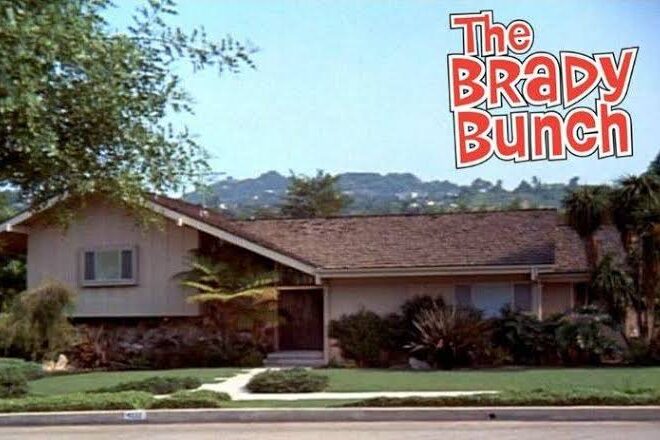
The house shown in the iconic opening credits and for all exterior shots is a single-story, three-bedroom ranch-style home located in Studio City, California. However, the famous interior set, built on a Hollywood soundstage, depicts a much larger two-story, split-level home with an easily accessible second floor for all the bedrooms. This discrepancy is the most glaring inconsistency, as the house used for the outside shots would have been far too small to contain the cavernous entry, the large living room, and the upstairs bedrooms and shared bathroom seen on the show. The real house had to be significantly expanded, adding over 2,000 square feet to the back, to make the interior layout and the famous staircase fit during the 2018 HGTV renovation.
2. The Floating Staircase is Architecturally Impossible
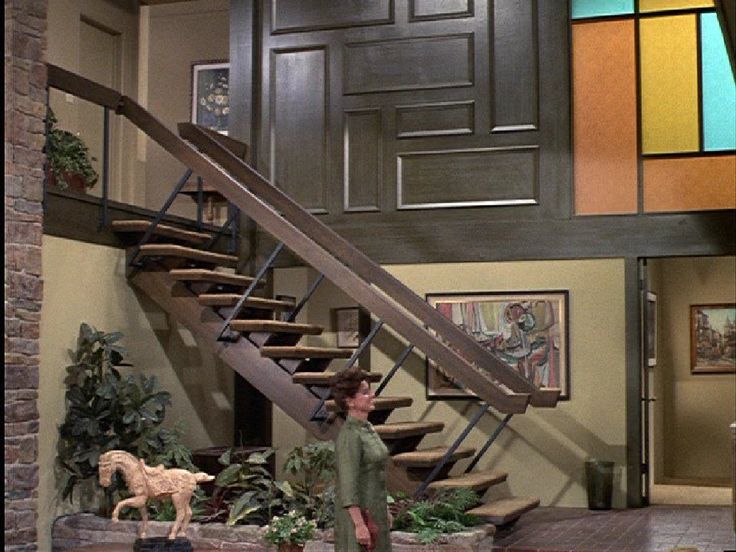
The hallmark of the Brady living room is the stunning, seemingly “floating” open staircase, which serves as a major visual anchor and a constant backdrop for family drama. On the TV set, the staircase dramatically leads to the second-floor bedrooms without any visible support in the center, giving it its mid-century modern flair. In reality, such a design would have been extremely difficult, if not structurally impossible, to replicate in a real home, especially one that lacked the true two-story space the set pretended to have. The HGTV renovation team had to work diligently, adding structural supports and removing a step, to create a similar, safe, and realistic version of the set’s iconic floating stair.
3. The Front Door Location is All Wrong
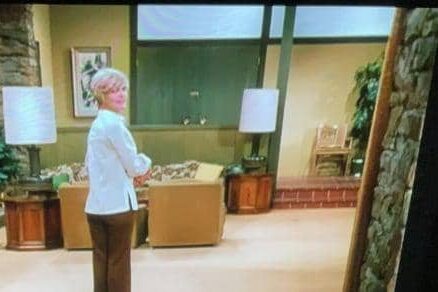
The angle of the front door shown on the set fundamentally clashes with the exterior house. When entering the Brady house on the show, viewers see a wide foyer with the impressive staircase directly ahead and to the right. However, if you look at the real-life exterior house, the front door placement and the orientation of the house on the lot mean that if you walked straight inside, you would be facing a completely different direction, likely toward the side of the set’s living room, not directly at the staircase. This spatial disconnect confirms that the interior layout was entirely designed for optimal camera blocking and storytelling, not for realistic architectural flow.
4. Six Kids Share a Single Bathroom
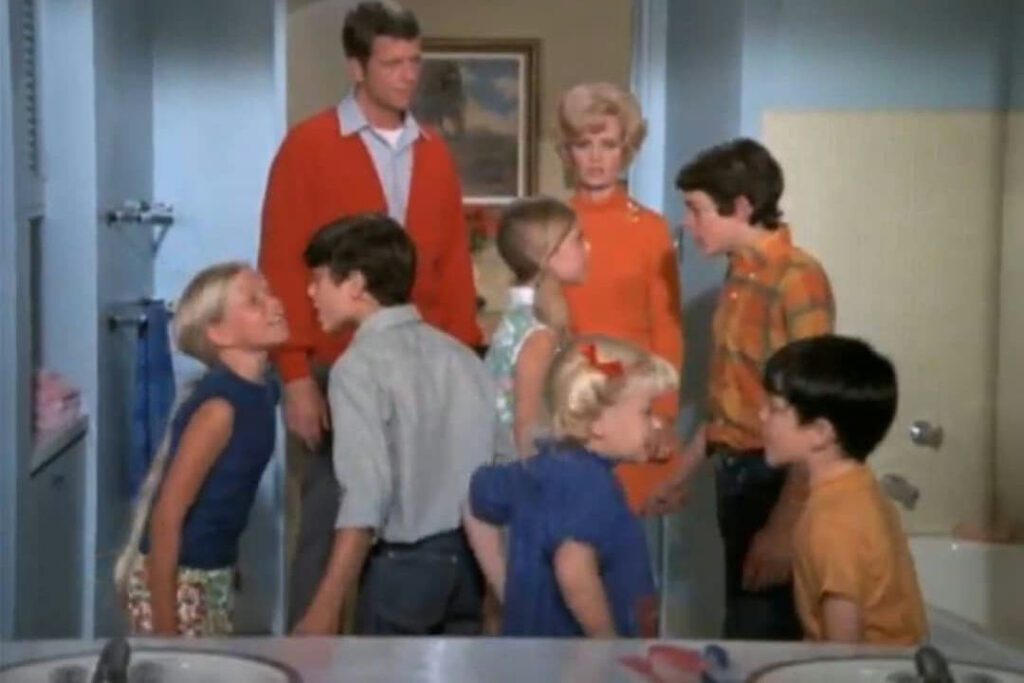
Perhaps the most famous, and baffling, inconsistency is that the six children, three boys and three girls, are shown to share one single, combined Jack-and-Jill bathroom. In a house as large as the Brady residence appears to be, it defies common sense and contemporary suburban architecture standards for eight people to rely on a single secondary bathroom, which is located conveniently between the boys’ and girls’ rooms. The sheer logistics of six teenagers getting ready for school each morning with only one toilet, one sink, and a tub/shower area is a plot point often played for laughs on the show, but one that would be pure chaos in a real household.
5. Mike’s Architectural Office is Never Seen
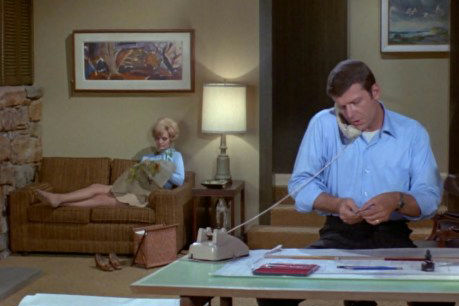
Mike Brady is established as a successful architect, and his home is supposedly one of his designs. Yet, despite his profession, which would logically require a dedicated workspace for drafting, client meetings, and the intense focus needed for such work, his office is barely seen or utilized. When it is mentioned, it’s typically relegated to the family den or rec room, a space which is used for communal family activities, or a small ground-floor den that sometimes doubles as Greg’s bedroom. This lack of a formal, professional, and private office space for the family patriarch and main earner is an odd omission for a professional of his stature living in such an expansive home.
6. Where Did the Attic Come From?
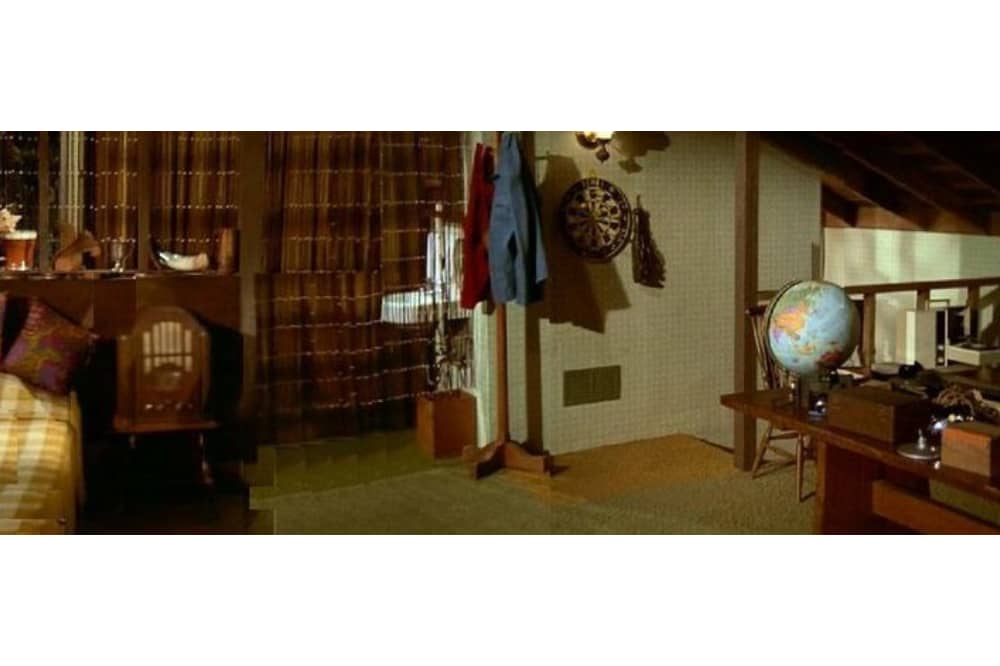
In the later seasons, Greg moves into a makeshift bedroom in the attic, giving him some much-needed space and privacy. However, the exterior house used for the filming is a single-story ranch, which means it had no traditional second floor or attic space to convert into a functional bedroom. The entire “attic” room existed only on the soundstage, created high above the set’s other rooms. Furthermore, even if the real house did have an attic, the show’s floor plan, which has the children’s rooms on the second floor, would have required a third story for an attic, a feature completely absent from the outdoor shots.
7. The Kitchen Appliances Don’t Work
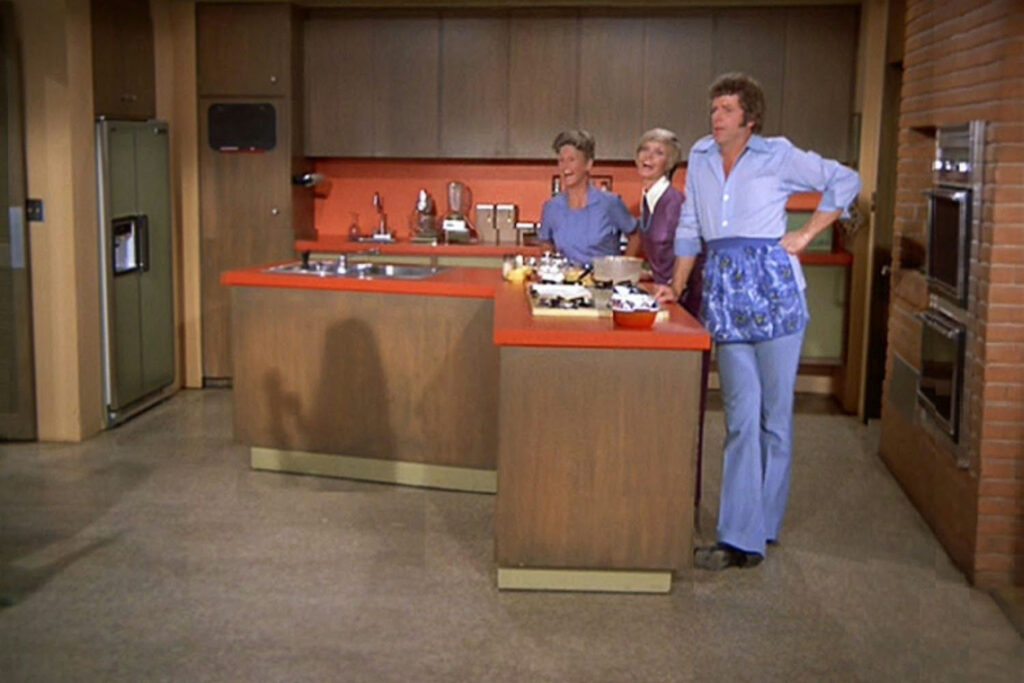
During the extensive HGTV renovation, it was revealed that to make the interior set look exactly like the show, the production team used non-functional, decorative appliances. This means the iconic orange kitchen, where Alice spent countless hours preparing meals and where the family often gathered, was essentially a prop room. The stove, oven, and other key appliances were purely for show, reflecting the practicalities of a soundstage set where a working stove or oven might pose a safety or continuity risk. The irony is that the heart of the home, the kitchen, was entirely decorative and could not be used to cook the family’s famous “pork chops and applesauce.”
8. Lack of a Visible Chimney for the Fireplace
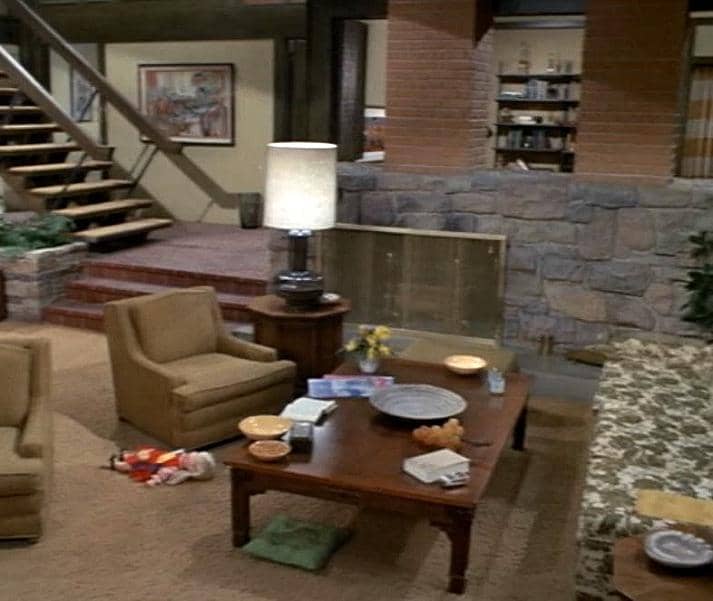
The Brady living room features a prominent stone fireplace, which provides a cozy, central focus for many family scenes. However, if you look closely at the exterior house used for the show, there is a striking absence of a chimney. Every traditional, wood-burning fireplace requires a chimney to safely vent smoke and combustion gases. The fact that the iconic fireplace on the interior set has no corresponding chimney on the exterior of the house reveals another area where the set design prioritized aesthetics over realistic home construction. The renovation team even had to install a modern, electric fireplace to avoid adding a chimney that would ruin the famous exterior look.
9. The Sliding Glass Doors to the Backyard
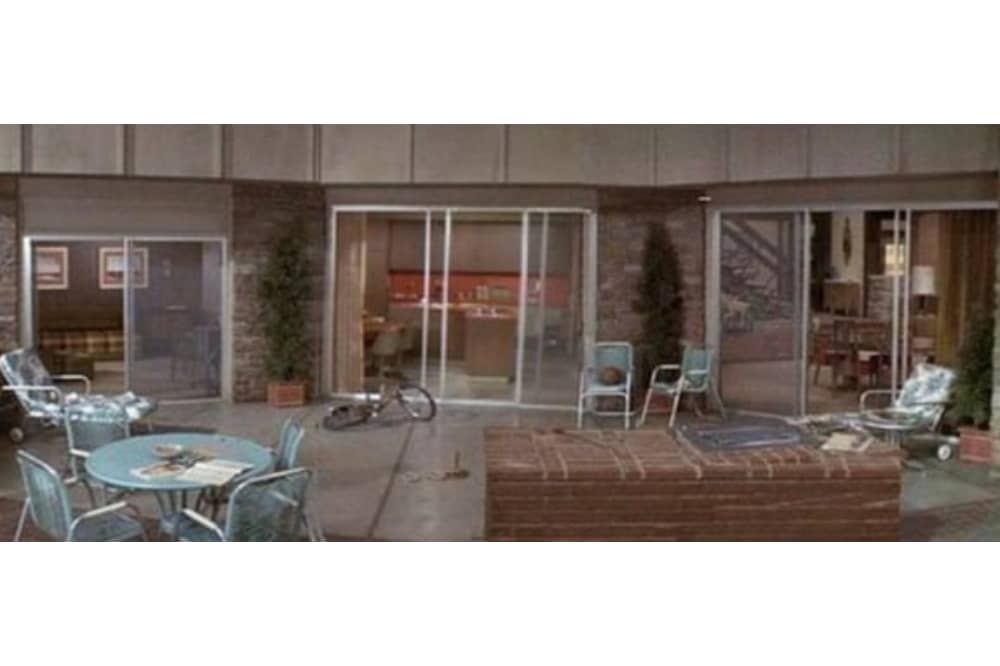
The Brady house is famous for its numerous sliding glass doors, particularly the triple-panel set that opens from the living/dining area onto the backyard and patio. While these doors create a wonderful sense of openness and bring in natural light, the number and size of these glass doors are a bit excessive for a typical suburban home of that era, especially one without an enclosed sunroom. The extensive use of glass served a clear purpose for the show: it allowed camera operators more flexibility and provided continuous sightlines to the outdoor set, ensuring that the backyard was visually connected to the main living area for seamless filming.
10. Alice’s Bedroom Location
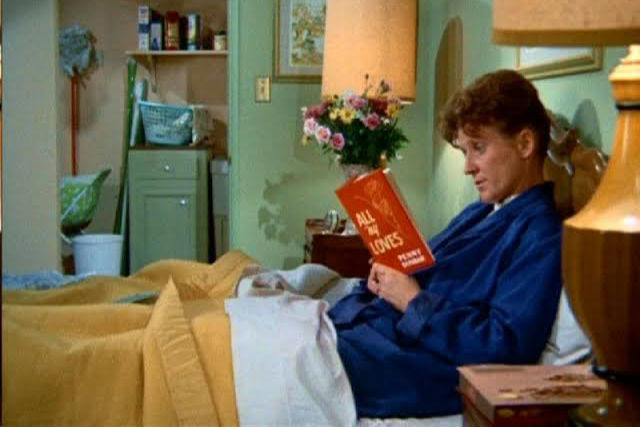
Alice, the beloved housekeeper, is shown to have her own bedroom. In a traditional floor plan, a housekeeper’s quarters might be tucked away near the kitchen or service area. The set suggests her room is located off a back hallway near the kitchen, but the actual spatial relationship to the rest of the house is extremely vague. The inclusion of a private room for Alice emphasizes her status as a member of the family, but the exact size and practical location of the room, especially in relation to the laundry area and back door, remains one of the more ambiguous parts of the set’s design.
11. The Illusion of Light Through Windows
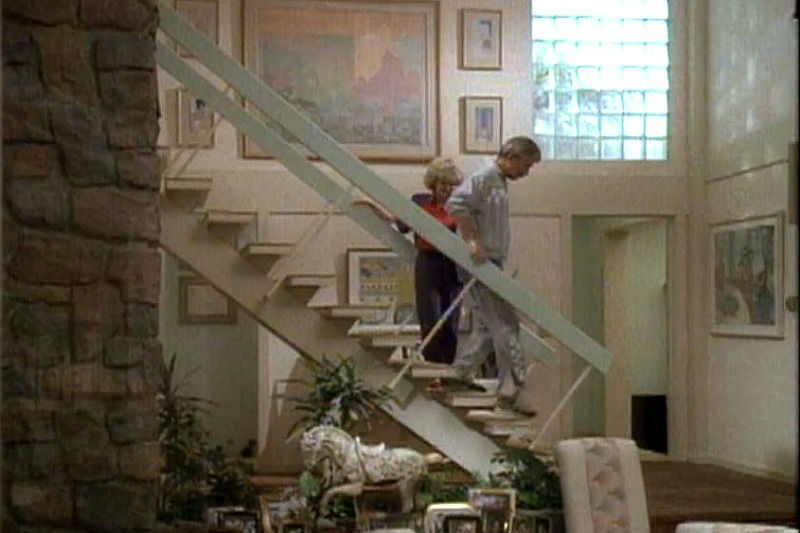
The windows on the set were designed to create the illusion of natural light flooding into the rooms, a crucial element for a sunny California setting. This was achieved using large, bright lights positioned outside the windows on the soundstage. In the real world, the actual amount of light and the angle it enters the house would constantly change. The controlled lighting on the set meant that the interior always had that consistently cheerful, bright glow, which, while visually appealing, is not a reality for any home experiencing a full day’s cycle of natural light.
12. The Two-Car Garage That’s Never Seen
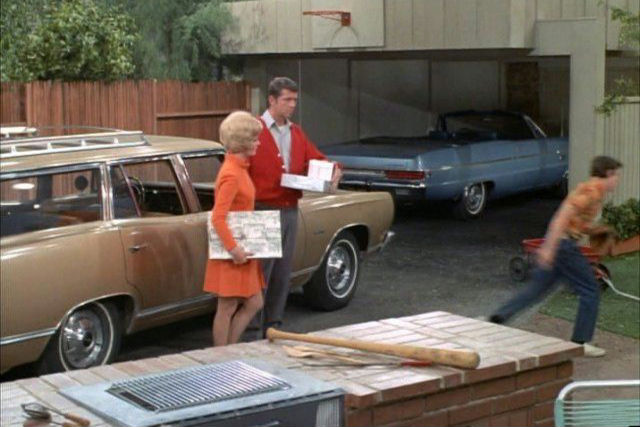
The Brady family, consisting of two adults, six children, and a dog, would have needed at least two cars to manage the logistics of a blended, suburban family. The exterior house has a noticeable garage, typically built for two cars. However, the garage is almost never featured on the show, nor is it consistently used as a set. This is unusual, as the garage often serves as a practical space for utility, storage, and a teenager’s hangout in many family sitcoms. Its absence from the action suggests the set designers chose to focus solely on the primary living spaces, ignoring a key functional area of a large family home.
13. The Ever-Changing Backyard Fence Height
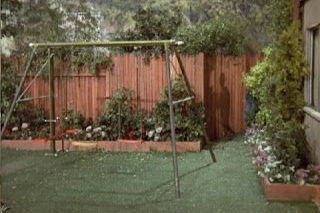
The show’s backyard is a lively space, used for games, celebrations, and teenage angst. A tall, wooden fence encloses the yard, presumably for privacy from neighbors. However, the height of this fence seems to change frequently, sometimes appearing low enough to easily see over, and other times looking like a formidable boundary. This inconsistency likely reflects the shifting camera angles and the temporary nature of the outdoor set, which allowed the production team to adjust the backdrop as needed for various scenes, rather than maintaining a fixed, structurally consistent boundary.
It’s clear that the “Brady Bunch House” wasn’t just a place to live, it was a masterful piece of television set design, built for the camera and for the flow of family life rather than for the laws of physics or architectural sense. These charming inconsistencies simply add to the enduring fun and mystery of the Brady world, reminding us why this wonderfully illogical house remains one of the most iconic homes in TV history.
Like this story? Add your thoughts in the comments, thank you.
This story 13 Things About The Brady Bunch House That Don’t Make Any Sense Once You Notice was first published on Daily FETCH


